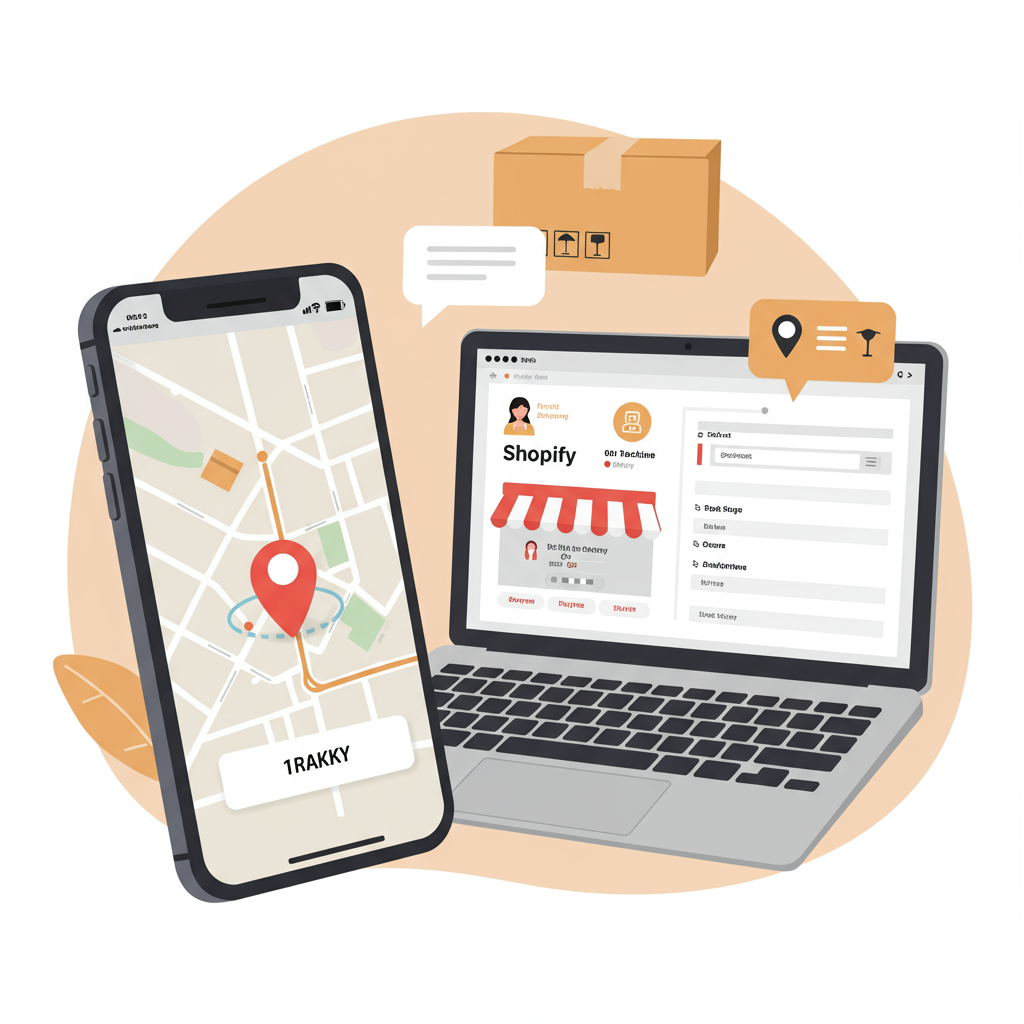Discover how robust order tracking can transform your Shopify store’s customer experience and operational efficiency.
As a Shopify merchant, I know firsthand the excitement of a new order. But that excitement quickly shifts to the crucial phase of fulfillment and, perhaps most importantly, keeping your customer informed.
In today’s e-commerce landscape, customers don’t just expect their orders to arrive; they expect to know exactly where their package is, every step of the way.
This isn’t just a nice-to-have; it’s a fundamental expectation that can significantly impact customer satisfaction, reduce support inquiries, and build lasting brand loyalty.
That’s why I want to talk about order tracking integration for Shopify. It’s a topic I’ve spent a lot of time on, and I believe it’s a cornerstone of a successful online business.
When I first started, I relied on Shopify’s basic tracking links. While functional, they often led customers off my site to generic carrier pages, which wasn’t ideal for branding or control.
I quickly realized that a truly seamless and branded tracking experience was essential for my customers and, frankly, for my sanity.
Think about it: a customer who knows their package is on its way, and can easily check its status, is a happy customer. A happy customer is more likely to return and recommend your store.
Conversely, a customer left in the dark about their order’s whereabouts can quickly become frustrated, leading to ‘Where Is My Order?’ (WISMO) inquiries that bog down your customer service.
Effective order tracking integration helps you proactively communicate with your customers, reducing those WISMO calls and freeing up your team to focus on more complex issues.
It also builds trust. When you provide transparency throughout the shipping process, you demonstrate reliability and professionalism, strengthening your brand’s reputation.
Shopify’s native tracking capabilities are a good starting point. When you fulfill an order and add a tracking number, Shopify automatically generates a link that customers can use.
However, these links typically redirect to the shipping carrier’s website (like USPS, FedEx, or UPS), which means your customer leaves your branded environment.
This can be a missed opportunity for further engagement, upselling, or simply reinforcing your brand identity during a critical post-purchase phase.
This is where third-party order tracking integrations come into play. They allow you to bring the tracking experience directly onto your Shopify store, or at least within a branded ecosystem.
These integrations can range from dedicated tracking apps to comprehensive customer service platforms that include tracking functionalities.
One common type of integration is with dedicated tracking apps like AfterShip, 17TRACK, or ParcelPanel. These apps specialize in aggregating tracking information from multiple carriers worldwide.
They often provide a branded tracking page on your Shopify store, allowing customers to enter their tracking number and see updates without ever leaving your site.
Another approach involves integrating directly with shipping carriers’ APIs. This is more complex and usually requires custom development or a robust shipping solution.
Some customer service platforms, such as Gorgias or Zendesk, also offer integrated tracking features, allowing your support team to quickly access order status directly within their dashboard.
Even marketing automation platforms like Klaviyo or Omnisend can leverage tracking data to trigger automated email or SMS updates, keeping customers informed proactively.
When I was evaluating solutions, I looked for several key features. First, real-time updates are non-negotiable. Customers want the most current information available.
Second, a branded tracking page was crucial for me. I wanted my logo, colors, and messaging to be present, reinforcing my brand even after the purchase.
Automated notifications were also high on my list. Sending proactive email or SMS updates for ‘in transit,’ ‘out for delivery,’ and ‘delivered’ statuses significantly reduces customer anxiety.
Multi-carrier support is vital, especially if you ship internationally or use different carriers for various products. A good solution should handle all your shipping partners seamlessly.
Analytics and reporting capabilities are also incredibly useful. Understanding delivery times, common issues, and carrier performance can help you optimize your shipping strategy.
I also considered ease of integration and setup. As a busy merchant, I didn’t want to spend days configuring a complex system. A user-friendly interface was a big plus.
Finally, reliable customer support from the integration provider was important. Knowing I could get help if I encountered an issue gave me peace of mind.
The process of integrating is usually straightforward. First, research and choose the solution that best fits your needs and budget. Many offer free trials.
Next, install the app from the Shopify App Store. Most apps have clear installation instructions that guide you through connecting your store.
Then, configure the settings. This typically involves linking your shipping carriers, setting up notification triggers, and customizing your branded tracking page.
Always test the integration thoroughly before making it live. Place a test order, get a tracking number, and follow it through the system to ensure everything works as expected.
Once integrated, communicate clearly with your customers about how they can track their orders. Include tracking links in order confirmation emails and on your website.
Set realistic expectations for delivery times, especially for international shipments. Transparency is key to managing customer satisfaction.
Regularly review your tracking data. Are there common delays with a specific carrier? Are customers engaging with your branded tracking page? Use this data to refine your operations.
Implementing a robust order tracking integration has been a game-changer for my Shopify store. It has significantly reduced customer service inquiries related to shipping.
More importantly, it has elevated my customers’ post-purchase experience, fostering greater trust and encouraging repeat business.
It’s an investment that pays dividends in customer loyalty and operational efficiency, allowing me to focus more on growing my business and less on tracking down packages.
What are your thoughts on the importance of order tracking for your e-commerce business? I’d love to hear your perspective.
Ultimately, providing a transparent and seamless tracking experience isn’t just about convenience; it’s about building a stronger, more reliable brand that customers will love and return to.






